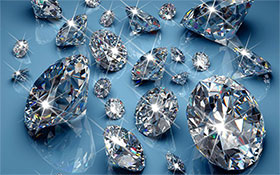
Wondering how you can make some extra cash? Do you have any unwanted or outdated diamond jewelry in your collection? Selling your unwanted diamond jewelry can be quite lucrative. As a local dealer specialized in buying the diamonds, we want to buy the diamonds you are selling. We have multiple buyers experienced in evaluating diamonds that you wish to sell. If you want to sell your diamonds, visit one of our buyers for a risk free and complimentary consultation. In this consultation our buyer will assess the value of your diamonds using the standard four c’s. These are clarity, cut, carat, and color. Some of our buyers are GIA certified and are the best in the field at evaluating diamonds. A buyer at our stores also uses the latest technology to find the value of all diamonds. A buyer will evaluate any diamonds that are one carat or larger. A buyer will assess loose or mounted diamonds. Buyers in our store are also certified in evaluating all precious metals and stones. Don’t wait; come in today to sell your diamonds to us! The process is quick, efficient, and we offer the best prices.
A diamond’s clarity is one of the four main components of how diamonds are graded. Diamonds are naturally occurring stones that are created when carbon is put under intense heat and pressure. Diamonds are collected through mining around the world. The process of how diamonds are created can produce inclusions and blemishes to the stone. Inclusions are internal markings. Blemishes are external markings. The clarity of a diamond is based on these inclusions and markings. The position, number, size, and nature of the blemishes and inclusions all affect the value of the diamond. While no naturally occurring diamond is completely void from inclusions or blemishes, the less a stone the more value it retains. The clarity scale used to grade diamonds ranges from flawless, internally flawless, very/very slightly included, very slightly included, slightly included, to included. The best way to determine a diamond’s clarity is to use a diamond microscope.





